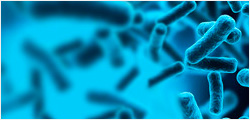NT-4, Mouse
Neurotrophin-4 (NT-4), also known as NT-5, is a neurotrophic factor structurally related to β-NGF, BDNF, and NT-3. Human NT-4 shares 48 - 52% aa sequence identity with human β-NGF, BDNF, and NT-3. Neurotrophins have six conserved cysteine residues that are involved in the formation of three disulfide bonds. NT-4 is expressed highest levels in prostate, lower levels in thymus, placenta, and skeletal muscle. NT-4 binds and induces receptor dimerization and activation of TrkB. NT-4 can signal through TrkB receptors and promotes the survival of peripheral sensory sympathetic neurons.
| Z03180 | |
|
|
|
| ¥18,654.00 | |
|
|
|
|
|
|
| Ask us a question | |








































